













The magazine of the art-form of the photo-essay
“A free, really high quality photo-essay magazine. Fabulous!”
Stephen Fry. British actor, writer and film & documentary maker

Mar 2014 back issue
by Robert Young Pelton

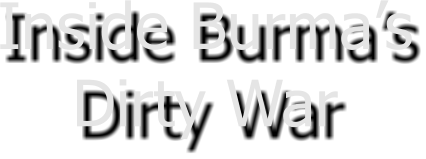


Robert Young Pelton goes up the river and deep inside the jungle to meet smiling rebels, impoverished mercenaries,
armed monks and devoted madmen.
Kawthoolie - The distant sound of steady mortar fire didn’t seem to bother Lt Col Nerdah Mya. Nerdah is the 41-year-
old commander of the 6th Brigade. The commander had changed out of his dress uniform and was now relaxing by
candlelight wearing a black t-shirt and beret. The son of the late Karen supreme commander Bo Mya had just
concluded a busy day of peace celebrations between a group of Myanmar government-backed Democratic Karen
Buddhist Army DKBA and his Christian faction, but the day wasn’t over yet. “There are about 100 government
soldiers making their way towards us. I will send my men to attack them and mine the way. It will not happen quickly.”
Turning our attention to the dinner of rice and tinned sardines it seemed just like yet another day in the 60 year-old
war between the Burmese government and the Karen rebels.
The Karen has been fighting their war of independence since Burma was given independence by the British after
World War II. Like many other ethnic groups pitted against a brutal regime, the Karen view the Burmese as historic
interlopers and brutal oppressors. The outside world sees it as an endless internal war with countless deaths and
hundreds of thousands of internally and externally displaced people.
To understand Myanmar is a complex and convoluted task but essentially today the Burmese and the Generals
control the central delta area while the ethnic groups surround them. Myanmar is divided into zones, black zones,
where free fire is allowed, brown zones, where rebels are under control and white zones where there is no fighting.
My trip is to the black zone just 100 miles east of the capital of Yangon. This area is ridiculously steep, remote and
made dangerously beautiful by limestone cliffs, steep lush valleys, well covered jungle and unspoiled rivers like the
Salween.
It is here in the unrecognized Karen nation of Kawthoolie the Karen rebels appear to be making their last stand
against the ethnic cleansing, slow strangulation and constant attrition of the Burmese generals and their 300,000 man
conscript army. Against them stand poor villagers, determined Karen fighters and a handful of dedicated foreign
volunteers.
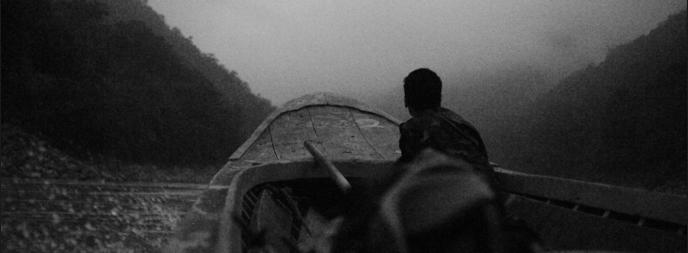
For many years there were rumors of an American Special Forces Colonel who ran a secret training camp deep inside
the rebel-held jungles of Burma. In 2010 I decided to find out if those rumors were true.

The boat landed at night and we had to scramble up with our hands up the steep mountainside. The rebels stay
under the tree cover to avoid detection by government gunships.

Finally I meet the “Father of the White Monkey” as he hikes out to meet us and guide across the river to the camp.

The camp has PT every morning before dawn.
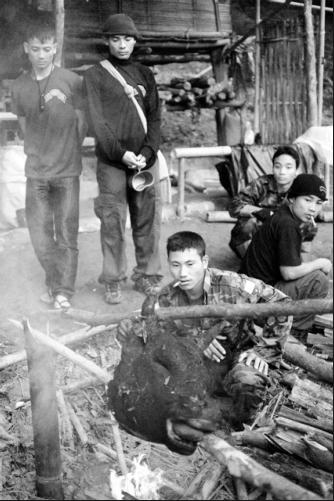
Meals are simple. Rice and the occasional deer. These
men carried in a cow head to add to their rice diet.

The weapons are old and battered. Some date back to World War II.

The Father of the White Monkey has solar power to run his communications.
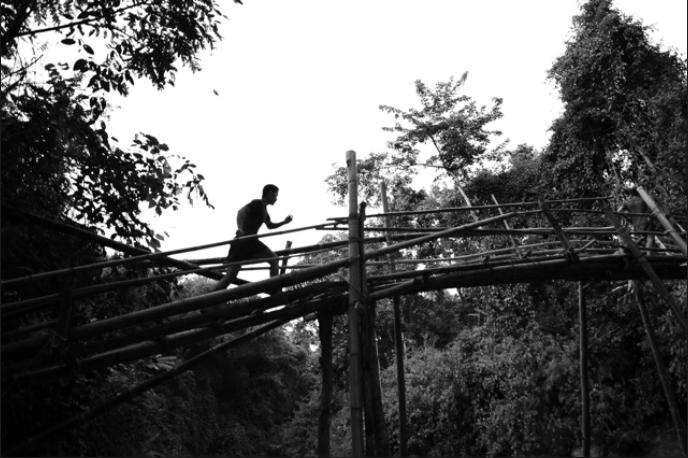
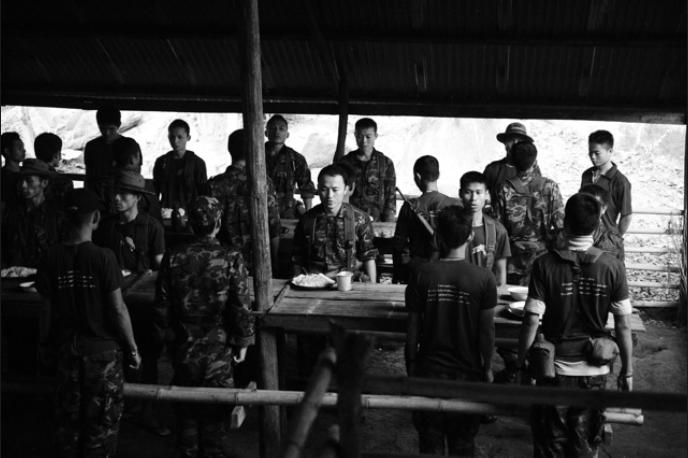
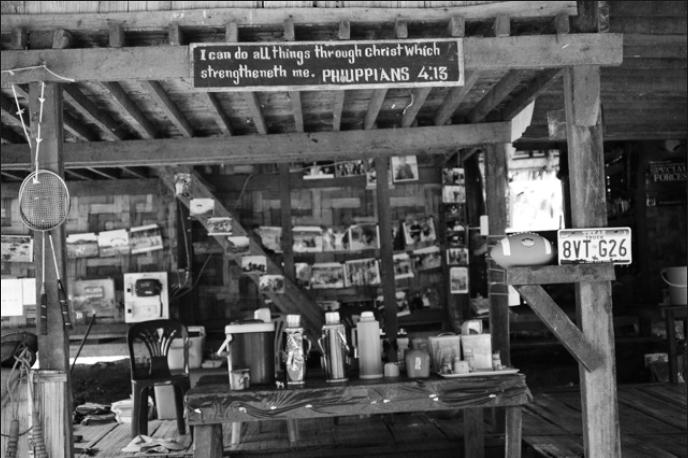
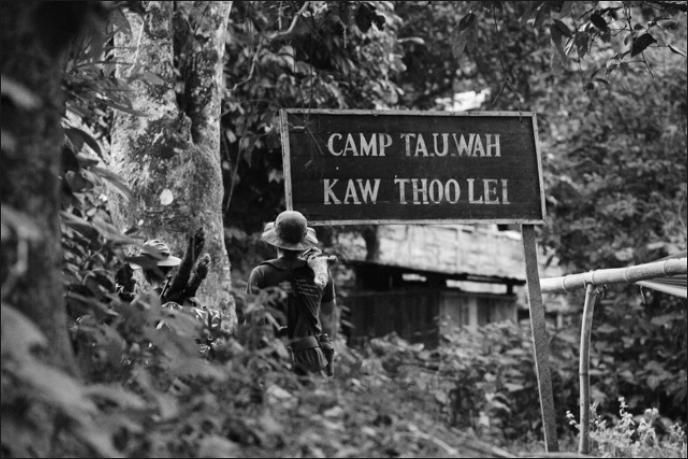

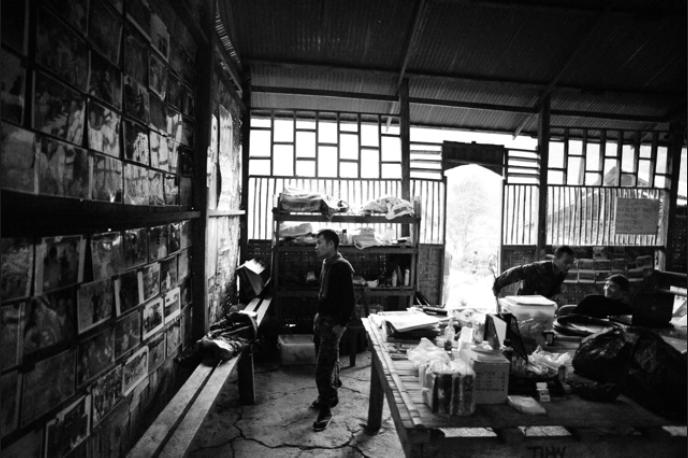

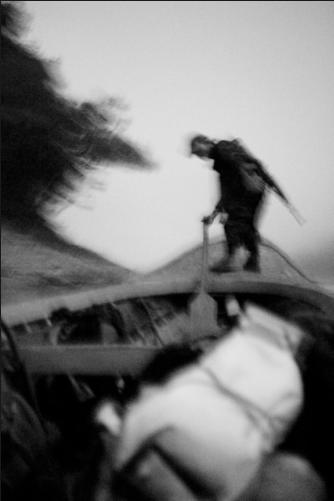
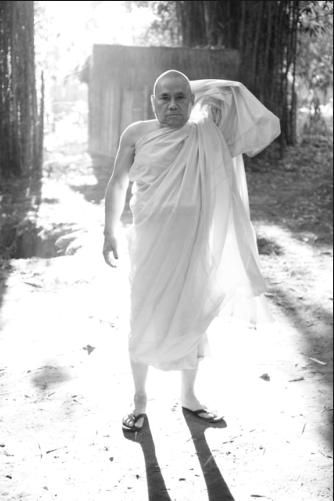

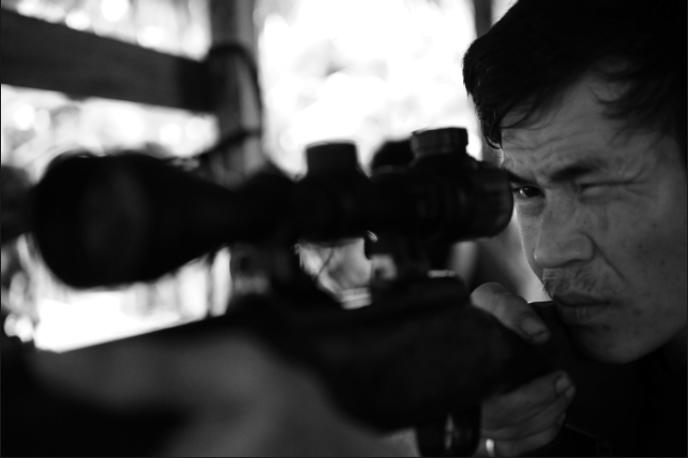

Kawthoolei is the name of the Burmese Karen enclave only a few miles from the Thai border.
Rambo - The Buddhist Monk who had to show two
rebels how to hitch a ride by borrowing their gun.
The favorite weapon of the rebels is the sniper rifle. They harass and attack Burmese government conscripts from the
jungle.
Soldiers training.











